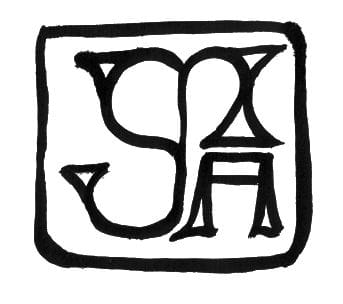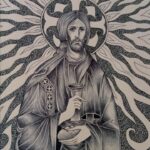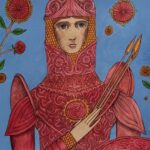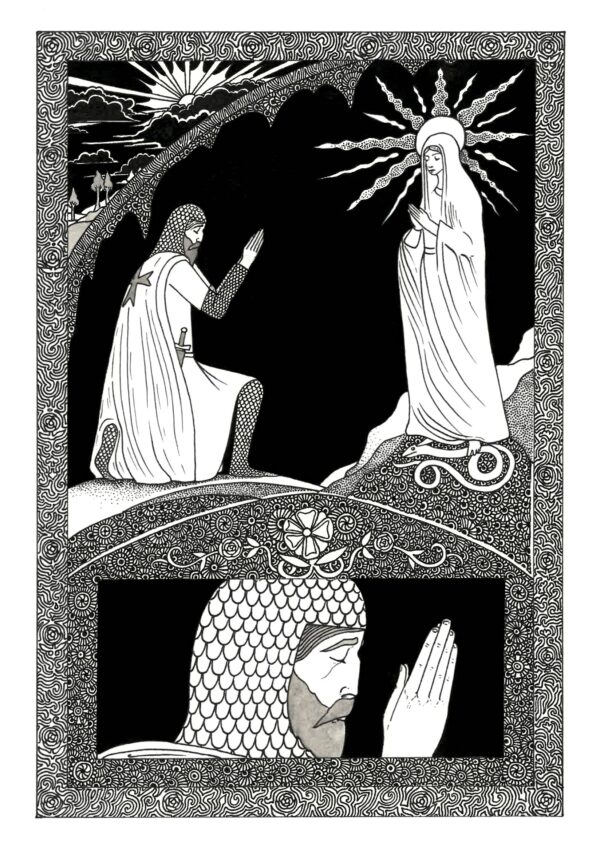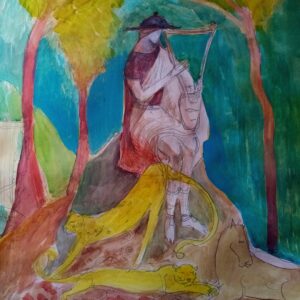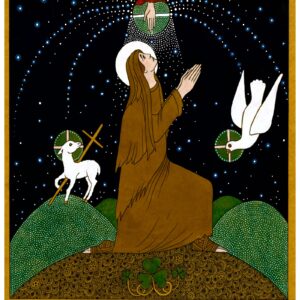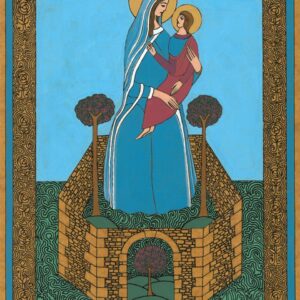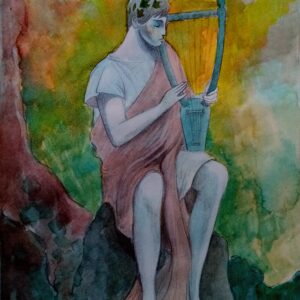Description
This is the first page from a new Graphic Novel about the Knights Templar. I created this image with pen and ink on Fabriano paper. There are 64 pages in total all created in the same style. It is a tale about a spiritual journey and battle of a Knight and one that focuses on the sacred and mystical side of the Knights Templar.
The Mystical Side of the Knights Templar. Guardians of Secrets and Seekers of the Divine
The Knights Templar, officially known as the Poor Fellow-Soldiers of Christ and of the Temple of Solomon, have long captivated the imagination of historians, scholars, and enthusiasts of the esoteric. Founded in 1119 during the Crusades, the Templar’s were initially a monastic military order tasked with protecting Christian pilgrims traveling to the Holy Land. However, their legacy extends far beyond their military exploits. Over the centuries, the Templar’s have become synonymous with mystery, secrecy, and a profound connection to the mystical and the divine. This essay explores the mystical side of the Knights Templar, delving into their alleged esoteric knowledge, spiritual pursuits, and enduring influence on Western mysticism.
The Templar’s and the Quest for Sacred Knowledge
One of the most enduring mysteries surrounding the Knights Templar is their alleged discovery of sacred knowledge during their time in Jerusalem. According to legend, the Templars excavated beneath the Temple Mount, the site of the ancient Temple of Solomon, and uncovered relics, manuscripts, and artifacts of immense spiritual significance. Among these treasures were said to be the Ark of the Covenant, the Holy Grail, and ancient texts containing esoteric wisdom.
While historical evidence for these claims is scarce, the idea that the Templars possessed hidden knowledge has fueled countless theories. Some suggest that they uncovered Gnostic teachings, Kabbalistic secrets, or even early Christian doctrines suppressed by the Church. This knowledge, it is believed, elevated the Templars to a higher spiritual plane, granting them insights into the nature of divinity, the cosmos, and the human soul.
The Templars and Mystical Rituals
The Templars’ initiation ceremonies and rituals have also been a source of fascination. Accused of heresy during their suppression in the early 14th century, the Templar’s were charged with engaging in occult practices, including the worship of mysterious idols like Baphomet. While these accusations were likely fabricated to justify their persecution, they have contributed to the Templars’ mystique.
Some scholars argue that the Templars’ rituals were influenced by Eastern mysticism, particularly Sufism, which they may have encountered during their time in the Holy Land. These rituals, it is speculated, were designed to facilitate spiritual enlightenment and union with the divine. The Templars’ alleged use of symbols, such as the double-headed eagle and the red cross, further suggests a connection to esoteric traditions.
The Templars and the Divine Feminine
Another intriguing aspect of the Templars’ mysticism is their purported reverence for the Divine Feminine. Some theorists believe that the Templars venerated Mary Magdalene, whom they regarded as a symbol of sacred wisdom and spiritual transformation. This devotion to the feminine aspect of divinity aligns with certain Gnostic and mystical traditions that emphasize the balance between masculine and feminine energies.
The Templars’ connection to the Divine Feminine is also linked to their alleged guardianship of the Holy Grail. In some interpretations, the Grail is not a physical object but a metaphor for the sacred feminine principle—a source of spiritual nourishment and enlightenment. This perspective positions the Templars as custodians of a profound spiritual truth that transcends conventional religious dogma.
The Templars and Their Legacy in Western Mysticism
The suppression of the Knights Templar in 1312 did not mark the end of their influence. Instead, their legacy endured, inspiring countless secret societies and mystical traditions. Organizations such as the Freemasons and the Rosicrucians have claimed a connection to the Templars, adopting their symbols and incorporating their esoteric teachings into their own practices.
The Templars’ emphasis on secrecy, spiritual pursuit, and the quest for hidden knowledge resonates deeply with the Western mystical tradition. Their story has become a symbol of the eternal search for truth and the struggle against oppression, inspiring generations of seekers to explore the mysteries of existence.
Conclusion: The Templars as Mystical Pioneers
The Knights Templar remain one of history’s most enigmatic and fascinating groups. While their military and financial achievements are well-documented, it is their mystical side that continues to captivate the imagination. Whether as guardians of sacred relics, practitioners of esoteric rituals, or seekers of divine wisdom, the Templars embody the timeless human quest for meaning and transcendence.
Their legacy reminds us that history is not merely a record of events but a tapestry woven with threads of mystery and wonder. In exploring the mystical side of the Knights Templar, we are invited to look beyond the surface and consider the deeper currents that shape our understanding of the past—and, perhaps, our own spiritual journeys.
